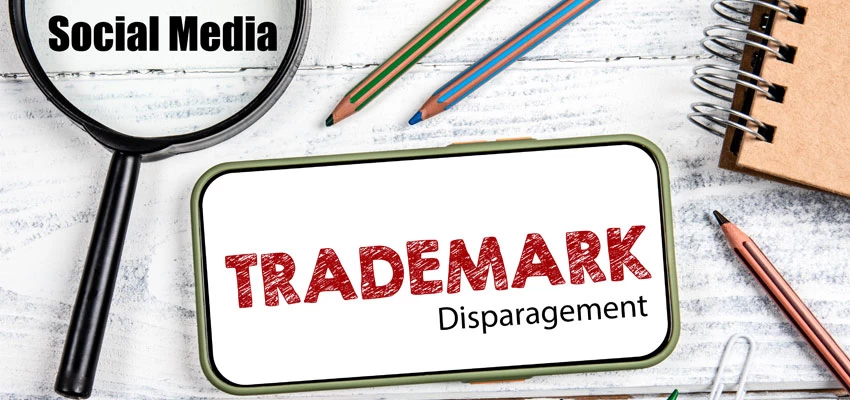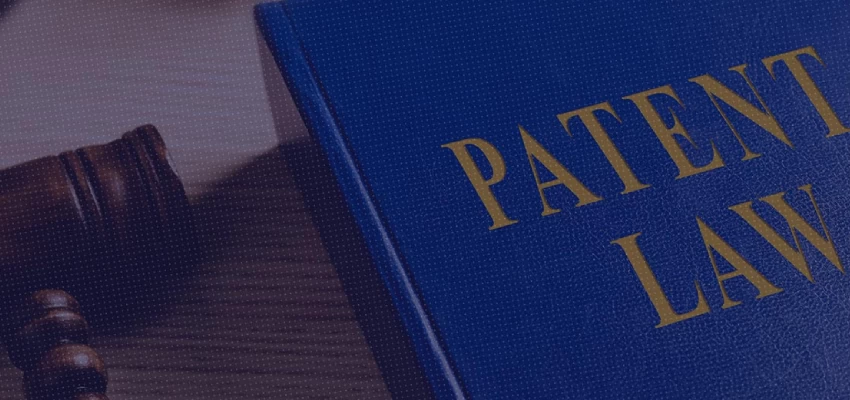Comparative Advertising is an aggressive form of marketing involving direct or veiled comparisons of one brand with one or more competing brands. Comparative advertisements may often lead to a legal tussle under the Indian Trademark Law.
In a recent such tussle, the FMCG[1] giant Hindustan Unilever Limited (‘Plaintiff’) sought to restrain pharma company USV Private Limited (‘Defendant’), from comparative advertising (‘impugned advertisements’) of the Defendant’s soap ‘Sebamed’ with the Plaintiff’s soaps Lux, Dove and/or Pears. The Bombay High Court’s Single Judge, by Order dated 19 January 2021[2] partially allowed the Defendant to continue with its impugned advertisements subject to certain restrictions/restraints at an ad-interim stage. The Order dated 19 January 2021 was upheld by the Division Bench of the Bombay High Court vide Order dated 21 January 2021[3]. Quickly thereafter, Special Leave Petition was preferred by the Plaintiff which was dismissed by the Supreme Court[4].
Ruling of the Single Judge
The Plaintiff’s greivance was related to a series of advertisments wherein the first one was a ten second teaser film in Hindi titled ‘SACH COMING SOON’ (Truth coming soon) which depicted models sitting at a table where one says ‘Filmstars, celebrities aur bollywood beauties kuch bhi bolne tayyar hote hai par sach bolney se ghabratey hai, sach coming soon’(Celebrities will say anything in advertisments but are afraid to tell the truth, which is coming soon). Further, the Plaintiff submitted that the impugned advertisements were mainly three audio-visual advertisements in Hindi language titled:
- ‘FILMSTARS KI NAHI, SCIENCE KI SUNO’ (Listen to science and not filmstars) – This compared Defendant’s soap with LUX soap of the Plaintiff.
- ‘TRANSPARENT SOAP KA SACH’ (The truth behind transparent soap) – This involved comparison with PEARS soap of the Plaintiff.
- ‘DUDH JAISE SAFED SOAP KA SACH’ (Truth behind the soap claiming to be white like milk) – This involved comparison with DOVE soap of the Plaintiff.
These three advertisements were launched by the Defendant for its product ‘Sebamed Cleansing Bar’. The Plaintiff argued that the impugned advertisments specifically targetted and disparaged the Plaintiff’s products by insinuating that the use of LUX and PEARS soaps on skin was as bad as using a detergent soap like ‘RIN’ solely on the basis of their pH levels. They also showed that pH of Dove was also high (pH 7) which was stated to be ‘not perfect for sensitive skin’. In comparison, the advertisement depicted that pH level (5.5) of the Defendant’s product was perfect for sensitive skin.
The Plaintiff argued that the three impugned advertisements along with the teaser created an impression that the Plaintiff was lying about its product and misleading the public. The Plaintiff further argued that the impugned advertisements mislead the public by conveying that the pH was the sole determinative factor for the quality of a soap and that any soap having a pH higher than 5.5 was not safe, inferior, sub-standard, harmful, dangerous, and not appropriate for the requirements/ suitability of human skin. The Plaintiff further submitted that the impugned advertisements deliberately slandered, denigrated and disparaged the Plaintiff’s LUX, DOVE and PEARS soaps to unjustly gain by promoting its SEBAMED CLEANSING BAR.
The Plaintiff submitted that most soaps had a pH of 9-10 and were completely safe for the human skin. The Plaintiff objected to comparison of LUX and DOVE with detergent soaps, which was argued to be of totally different composition and function. It was submitted that the effect of the product on the skin i.e. harshness or mildness was not solely governed by the pH level, but by several other ingredients contained in the soap. Thus, it was argued that a soap with a higher pH could be milder than a soap with a lower pH level.
Submissions of the Defendant
The Defendant submitted that a normal healthy skin had the pH range of 5.4 to 5.9, and use of soap with high pH (higher the pH, greater the alkalinity) caused an increase in the skin pH which increased dehydration of the skin by removing the body’s natural oils causing irritability and alteration in bacterial flora. It was submitted that optimal protection and compatibility with the skin (which is slightly acidic), was only achieved with a pH value of 5.5. It was further submitted that the pH value of LUX and PEARS closely matched the Plaintiff’s detergent soap RIN (pH value 10.52). In support of its contentions, the reliance was placed by the Defendant on an article of the Indian Journal of Dermatology[5]. The Defendant submitted that though pH was not the only determinative factor in ascertaining the harshness or mildness of a soap, it was certainly one of the relevant factors.
The Defendant further submitted that in an old advertisement, the Plaintiff itself had highlighted the pH level of its DOVE soap in a laudatory manner, along with a claim that it was milder in comparison to arguably harsh sandal and detergent soaps by using a litmus paper, where the Plaintiff’s DOVE soap was claimed to be milder on the basis of its lower pH. Therefore, it was submitted that the Plaintiff should not be allowed to approbate and reprobate in respect of pH.
It was further submitted that the impugned advertisements were a form of commercial free speech and were, thus, protected under Article 19(1)(a) of the Constitution of India and cannot be indicted by any law unless it was within the exception of Article 19(2).
Decision of the Court[6]
The Single Judge observed that if the advertisement was found to be disparaging, then, the Court could either restrain the communication of the entire advertisement, or could identify the parts of advertisements that belittle the competitor’s product and grant an appropriate injunction accordingly. The Single Judge further held that a regular consumer was not a scientist who knows what are the ingredients that go into making a soap and what is the effect of those ingredients on the skin including the pH level of a soap.
In this backdrop, the Single Judge analysed the two audio-visual advertisements comparing Defendant’s product with LUX and PEARS soap of Plaintiff along with printed advertisements, and found them insinuating that the use of these soaps is as bad or equivalent to using the detergent soap RIN on the skin and, therefore, held them to be disparaging to the Plaintiff’s LUX and PEARS soaps. The Single Judge relied on a 2016 decision of Advertising Standards Council of India (ASCI) which clearly held that pH alone does not govern the quality or harshness of soap. The Court concurred with ASCI and observed that depending on the ingredients of the soap, it was possible that a soap having a higher pH value may still be milder on skin than a soap having a pH value which is lower. The Single Judge permitted the Defendants to air such advertisements, in respect of LUX and PEARS soaps, however, directed that the same should be without any reference to any washing detergent including Plaintiff’s RIN. It was held that such reference was not protected under commercial free speech as contemplated under Article 19(1)(a) of the Constitution of India, since the said provision did not permit a party to disparage, belittle and/or malign the product of the competitor.
Further, it was held that the third audio-visual advertisment of ‘DUDH JAISE SAFED SOAP KA SACH’ (comparsion with DOVE soap) and related printed advertisements did not warrant any injunctive relief since such advertisments merely boasted of pH level of SEBAMED soap being lower than that of the DOVE soap and portrayed it being best for sensitive skin. Herein, the Court found the Defendant to have admitted that it was incorrect to categorize any soaps with a pH between 6 to 10 or between 0 to 5 as ‘not safe’ and to categorize soaps having pH levels between 5 to 6 as ‘safe’. The Court directed the Defendant to substitute the words ‘not safe’ and ‘safe’ with the words ‘not ideal’ and ‘ideal’.
Regarding the old advertisment of the Plaintiff comparing its product DOVE based on pH alone, the Court held that even if it was to be assumed that the Plaintiff had misled the public in the past, it was before the ASCI decision and for such claims, the Plaintiff was pulled up by the ASCI. The Plaintiff’s advertisments were subsequently pulled down. The Single Judge while reasoning that the two wrongs does not make one right, held that the Defendant could not take a defence under the old advertisment of the Plaintiff.
Ruling of the Division Bench
Being aggrieved by the Single Judge’s Order dated 19 January 2021[7], the Plaintiff immediately approached Division Bench of the Bombay High Court for an appeal since ad-interim injunction was granted only partially and a complete relief was denied to the Plaintiff. The Division bench vide its Order dated 21 January 2021[8], observed that the Defendant had already been restrained from using the terminology ‘safe’ and ‘unsafe’ in the impugned advertisements. Further, comparison with the Plaintiff’s products with washing detergent in general and RIN detergent/bar in particular had also been prohibited by the impugned order.
The Plaintiff contended that whilst it may be permissible for the Defendant to describe its own product as ‘ideal’, it should not be permitted to describe the Plaintiff’s products as ‘not ideal’. The Plaintiff further contended that its product ‘DOVE’ had been said to be ‘not perfect for sensitive skin’ which arguably amounted to disparagement. The Defendant proposed that, without prejudice to its rights and until final disposal of the Interim Application before the trial court, it would delete the sentence ‘It’s not perfect for sensitive skin’ in the impugned advertisement whilst comparing it to DOVE Soap.
The Division Bench by relying upon the article titled ‘Evaluation of pH of Bathing Soaps and Shampoos for Skin and Hair Care’[9] concluded that there was nothing wrong in Defendant’s comparison of the pH of the two products and claiming that its product was ideal for sensitive skin. Further, while deciding the issue whether the Defendant can be permitted to say that the Plaintiff’s products were ‘not ideal’ for sensitive skin, the Division Bench held that there was some scientific basis for saying so. The Division Bench denied to modify the order of Single Judge reasoning that, even if the Defendant were to stop at merely comparing the two products by names and with reference to their respective pH values, and then calling its product as ‘ideal for skin care’, it wouldn’t be that different from implying that the rival products were not so ideal. The Division Bench further observed that the real denigration came with the use of the words ‘not safe’ had been already dealt with in the Single Judge’s order[10], since such term did not have any substantial scientific basis prima facie, as safety was also based on other factors other than the pH value.
Conclusion
The Single Judge in the present case[11] pertinently observed that while advertising was merely a commercial transaction, it was nonetheless dissemination of information regarding the product advertised and that public at large was benefitted by such information making it critical for a democratic economy. Further, it is settled law that whilst advertising own product, one was entitled to some puffery regarding its goods, even though the declaration might be untrue. The proponent of an advertisment could also compare the advantages of its product over the product of others. However, while doing so, one could not say that goods of its competitors were bad, either expressly or by necessary implication, else one would be guilty of slander and defamation. It is also well settled that to decide the question of disparagement, the following factors are to be considered:
(a) the intent of the commercial / advertisement;
(b) the manner of the commercial / advertisement and
(c) the story line of the advertisement / commercial and the message sought to be conveyed by it.
The rulings of the Bombay High Court follow the aforementioned well established jurisprudence of Comparative Advertising. However, in the present case, while the rulings allowed the impugned advertisements to continue to be aired to the public based on the scientific principles, it crucially also restrained the Defendants from extrapolating the said scientific principles beyond the factual limits.
It is pertinent to mention that facts of this case bear a resemblance to the Delhi High Court’s ruling in Havells India Ltd. and Ors. v. Amritanshu Khaitan and Ors.[12] wherein Eveready LED Bulbs compared its brighness (lumens) and price with that of the Havells LED Bulbs. Main argument of the aggreived party herein was that the Defendant was misleading the public by not disclosing all the relevant factors including ‘power factor’ and ‘overall life’ of the bulb. The Delhi High Court herein held that ‘In the opinion of this Court, it is open to an advertiser to highlight a special feature/characteristic of his product which sets it apart from its competitors and to make a comparison as long as it is true. For instance, if a chocolate biscuit manufacturer issues a comparative advertising highlighting that his product has the highest chocolate content and the lowest price, then in the opinion of this Court the rival manufacturer cannot seek an injunction on the ground that fibre content or calorific value or protein content had not been compared.’. Similarly, in present case, even though the Defendant had not compared the constituent ingredients of the soap with that of the Plaintiff’s soaps, the same may not be necessarily required to be shown in light of the aforesaid jurisprudence. The aforesaid analysis may be crucial for conclusive determination of the present dispute, since this issue is bound to be raised by the Plaintiff at trial stage.
[The authors are Consultant and Partner, respectively, in Intellectual Property Rights team at Lakshmikumaran & Sridharan Attorneys, New Delhi]
- [1] Fast Moving Consumer Goods.
- [2] Hindustan Unilever Limited and Another v. USV Private Limited, Interim Application (L) No. 808 OF 2021 in Commercial IP Suit (L) NO. 805 OF 2021, Bombay High Court, order of Single Judge dated 19 January 2021.
- [3] Hindustan Unilever Limited and Another v. USV Private Limited, Interim Application (L) No.1921 OF 2021 IN Commercial Appeal (L) NO.1919 OF 2021, Bombay High Court, order of Division Bench dated 21 January 2021.
- [4] Hindustan Unilever Limited and Another v. USV Private Limited, Petition(s) for Special Leave to Appeal (C) No(s). 2437/2021, Order of Supreme Court dated 15 February 2021.
- [5] Jose Tarun et al., Evaluation of pH of Bathing Soaps and Shampoos for Skin and Hair Care, 59(5) Indian J Dermatol. 442, 442–444 (2014).
- [6] Supra Note 2.
- [7] Ibid.
- [8] Supra Note 3.
- [9] Supra Note 5.
- [10] Supra Note 2.
- [11] Ibid.
- [12] 2015(62)PTC64(Del).











